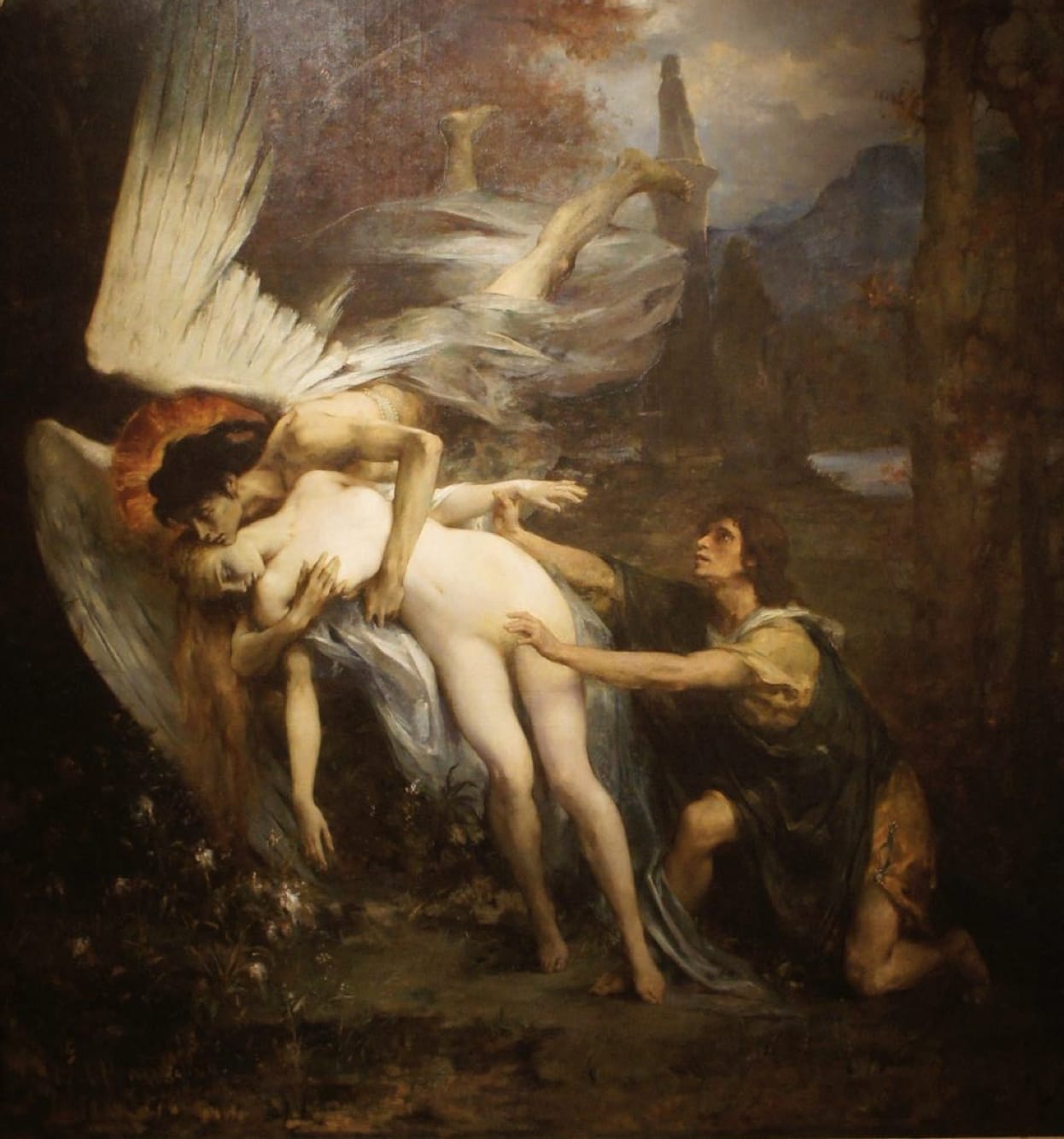Henry-Léopold Lévy (1840 – 1904)
Head of a Youth
Charcoal and black chalk, heightened with touches of white chalk, on thin papier calque
27.8 x 27.6 cm. (11 x 10 7/8 in.)
Provenance:
Head of a Youth
Charcoal and black chalk, heightened with touches of white chalk, on thin papier calque
27.8 x 27.6 cm. (11 x 10 7/8 in.)
Provenance:
The first or second sales of the contents of the studio of Henri-Léopold Lêvy (either Paris, Hôtel Drouot, 2-3 March 1905 or Paris, Hôtel Drouot, 29 November 1905), with the vente stamp (Lugt 1675) at the lower left.
The present sheet is a study for the head of the angel of death in Death and the Maiden painted in 1876 and now in the Musée de Beaux-Arts de Nancy (fig. 1).
Born in Nancy, Henri-Léopold Lévy enrolled in the Ecole des Beaux Arts de Paris in 1856, becoming a student of François-Edouard Picot and Alexandre Cabanal. He subsequently entered the studio of Eugène Fromentin, making his Salon debut in 1865 and winning a medal for Hecuba finding the body of Polydorus. Continuing to exhibit regularly, Lévy again won prizes at the Salons of 1867 and 1869 and achieved critical success in 1872 with Herodias and then again the following year with Christ in the Tomb.
Although he was awarded the Légion d’honneur in 1872, Lévy experienced considerable hardship toward the end of his career due to the anti-Semitism aroused by the Dreyfus affair in 1895. He refused to sign his paintings with a pseudonym, going against the wishes of his dealers and thereby losing an important outlet for his work, although he continued to receive commissions for decorative mural scenes and to exhibit at the Salon until the year before his death.

Fig. 1, Henry Léopold-Lévy, Death and the Maiden, oil on canvas,
306 x 274 cm, Musée de Beaux Arts, Nancy
